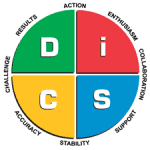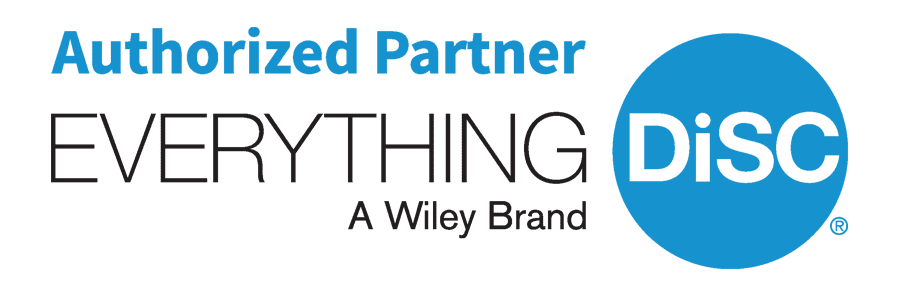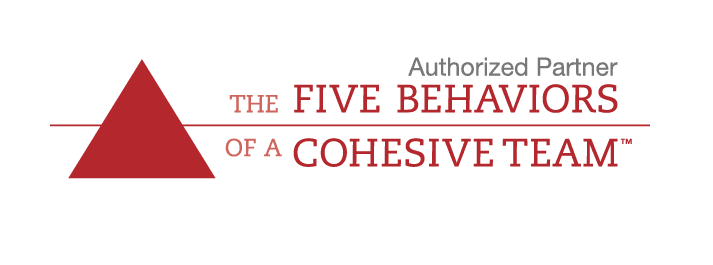Case Study: Using DiSC Classic at a Staff Retreat
A staff retreat provides an ideal environment for team-building and learning about others. The DiSC Classic 2.0 provides a safe language and model to communicate individual and team behavioral styles and build better working relationships.
The Client
The Midwestern chapter of a national philanthropic organization is located in the Kansas City area, with several satellite offices in neighboring communities. They were having their annual staff retreat at the Kansas City Zoo. We had presented at a previous staff retreat, and they wanted us to come back for this retreat.
The Business Need
Their goal was to bring their staff together from the various offices and to create an environment for them to learn more about each other. Another goal was to foster teamwork among the various offices. This is the one time each year when many of them have a chance to meet face to face and strengthen their relationships. At the retreat, they learn about the organization’s vision and how each office and their particular role fits into that vision.
The Solutions
Two years prior, we introduced DiSC® Classic to the group. They enjoyed it a great deal, and the director said they were still talking about that session, so she wanted to build on what we had done previously. There had been a fair amount of turnover in the staff over the past two years, so we had some who were familiar with the DiSC® model, and many who were not. Luckily, I still had a list in my file from our previous session with each participant’s name, and their classical pattern. We decided to use the online DiSC Classic 2.0 Profile as pre-work for those who had not previously experienced DiSC. The new staff members who took DiSC Classic 2.0 prior to our session sent me a copy of their report so I could map out the entire make-up of the class ahead of time. ng on style differences, we were able to talk about the value each person brought to the organization and what they needed from their co-workers in order to be successful.
ng on style differences, we were able to talk about the value each person brought to the organization and what they needed from their co-workers in order to be successful.
The Delivery
I conducted a three-hour team-building session the morning of the retreat. Prior to my session, the group did some introductory exercises focused on their organization and its mission. They work with clients suffering from a debilitating illness, so they set up stations for staff members to experience the effects of a physical disability. For example, at one station, participants wore bulky mittens and tried to tie a child’s tennis shoe to understand how it feels to lose your fine motor skills.
Then we moved into our session on DiSC. Since many of them had taken the profile previously, we started with an overview of DiSC. After introducing the model and the four dimensions of DiSC, we did some fun exercises by breaking them into their primary style group. I had brought DiSC pins along and gave each participant the pin for their primary dimension, D, i, S, or C.
In their DiSC groups, the participants had several items to discuss, such as coming up with three words that described their group, etc. One of the items was to design the ideal car for their dimension. The “D” group came up with a red, convertible HumVee, and the “i” group developed quite a fun pictorial representation of their vehicle, including a stretch limo (for lots of friends) with a hot tub on top, etc. The “S” group had a practical Ford sedan, and the “C” group complained they did not have enough time to complete the exercise as they wanted to check various consumer reports before making their decision.
I had chosen various animals for each of the groups, as the retreat was held at the zoo. I incorporated all of the exercises on paper with a zoo “theme” and gave away prizes throughout the morning such as handmade soap wrapped in Zebra paper, etc. That added to some of the fun for the day. Part of their exercise was to tell us how their animal represented their group. I warned the “C” group that they would probably not like the animal I had selected, and that they were free to choose another animal more to their liking. And of course, they did!
We then had everyone discuss the following scenario within this same DiSC group:
Imagine your group decides to go to lunch, to join others at a favorite restaurant. (We first decided on a restaurant everyone was familiar with and determined its location from the organization’s main office, plus we identified a main intersection on the way to the restaurant.) Now imagine that you are approaching the busy intersection when you are suddenly stopped by huge boulders blocking the road!
The assignment: figure out what your group would do. How would you solve this problem? After several minutes of brainstorming, each group reported back with the strategy they developed. The “D” group said they’d leave the car and start walking. The “i” group talked about not wanting to let down their lunch dates, and needing to get to the restaurant to see everyone else they were meeting. The “S” group said they would probably go home and try lunch another day. Why? Because by the time they got to the restaurant, their table would have been given to someone else anyway! The “C” group had put together a plan to make sure they got to the restaurant safely, although they had many unanswered questions. It was fun for everyone to see DiSC in action, once again. As the facilitator, I could also share my insights as I watched them tackle this challenge.
Next, I asked one volunteer from each group to come up and sit in four chairs I had arranged like car seats at the front of the room, facing the audience. The “D” was in the driver’s seat, the “i” next to that person, and the “S” and “C” were in the back.
I then asked them to act out the scenario, assuming their natural DiSC style as a member in the car. They had a good time with that! Then I asked for another four volunteers come to the front, but this time we did something different. I put the “S” in the driver’s seat, the “C” next to that person, and the “D” and “i” in the back. They had to act out the role appropriate to their new seat—so the “S” was acting like a “D” and vice versa. This led to a group discussion on how difficult it is to act outside your normal behavioral style, and how uncomfortable it makes you feel. It also led to a dialogue of learning to stretch our behavior and meeting others where they are.
After that, I had everyone break into groups by Classical Pattern, e.g., Perfectionists, Creative Patterns, etc. We had approximately seven patterns represented. I then spent some time reviewing each of the Classical Patterns we had represented in the group. They then discussed a few questions to report back to the bigger group:
- What value do you bring to the organization?
- What do you need in order to be successful?
- When you’re dealing with conflict, how do you like to be approached?
- What motivates you?
Our goal was to get people acquainted with each other. In order to facilitate that, we constantly formed new groups for a number of exercises throughout the session. This kept the session lively and facilitated the participants’ ability to get to know each other better. It also broke them out of their familiar office groups.
We had one small-group exercise where they discussed what it meant to build a spirit of community. They also developed a list of what needed to stop happening in their organization, what they needed to keep doing, and what they needed to start doing to build a strong community.
The Results
As a result of their discussions around building a spirit of community, the staff had a follow-up assignment to bring their ideas back to their offices and focus on what they could stop and start doing. The evaluations from the session were excellent, and they came away feeling a sense of community, as well as a renewed commitment to the organization and to each other. In addition, after getting their permission, I emailed them two items:
- A chart with each employee’s highest DiSC dimension
- A chart with each employee’s Classical Pattern
I would not be surprised to be asked a third time to present at a future staff retreat. I received an unsolicited thank you letter from the director of the organization. It was definitely a fun and rewarding session to do!
Download PDF of Case Study: Using DiSC Classic at a Staff Retreat (PDF, XX Kb).
Related Case Study
- Using DiSC Classic with a Social Services Organization – All to often people confuse intention with behavior and communication. DiSC Classic 2.0 provides understanding into our personality style and how to adapt it to better relate to others.





